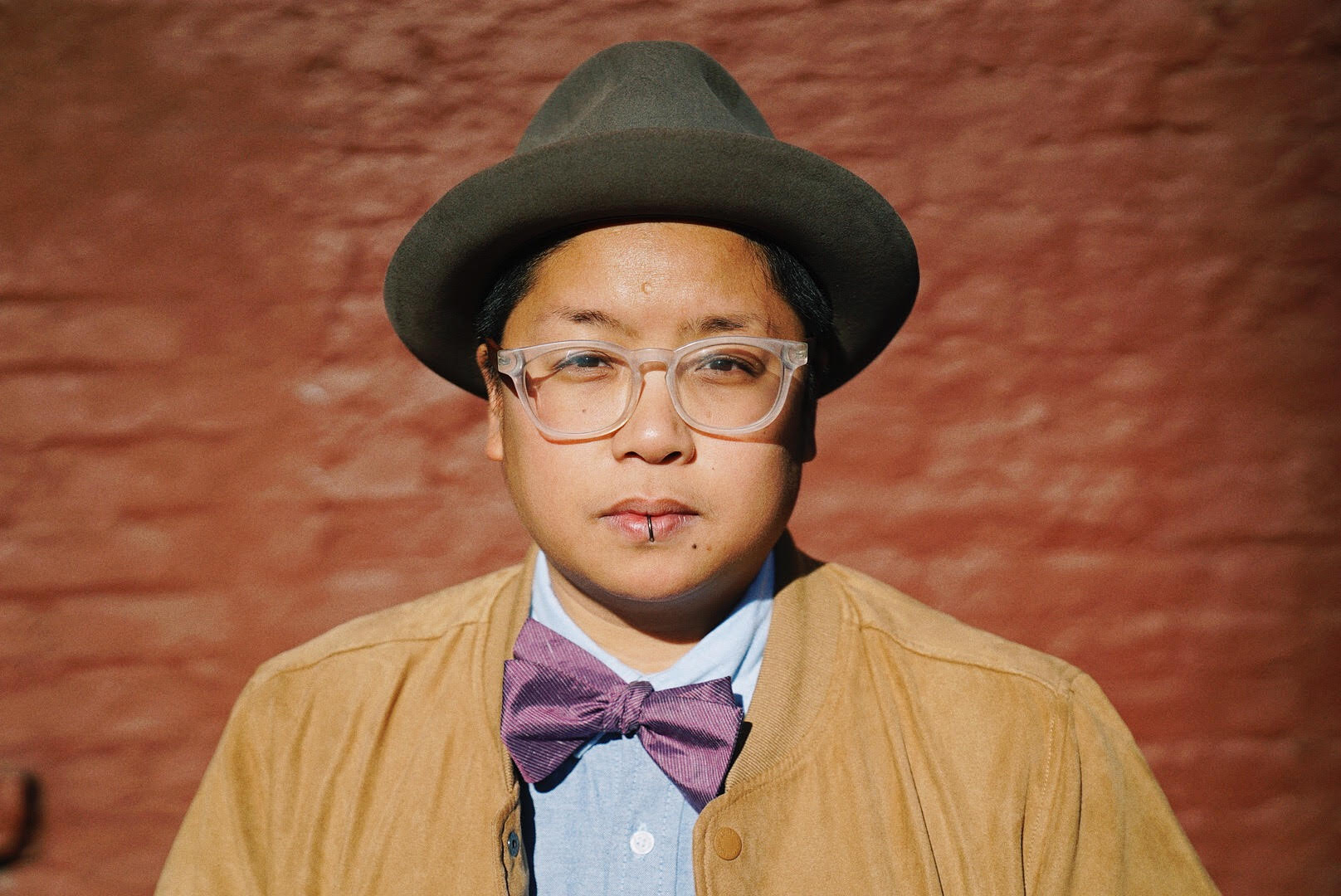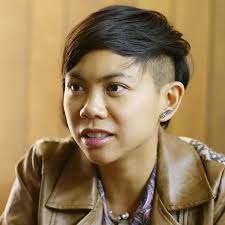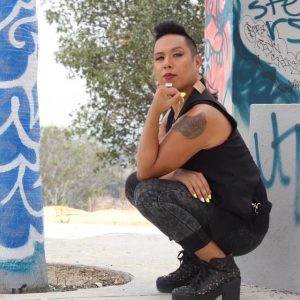Queer Filipinx/Pilipinx Poetics: Celebrating Filipino American History Month

Author: Kay Ulanday Barrett
October 25, 2017
For October I’m celebrating Filipino American History Month/FAHM. I felt it was important to honor the work of Filipino/a/x poets that have been a deep fixture across the landscape of poetry. The Filipino American National Historical Society established Filipino American History Month in 1988 in California and Hawaii, where a large number of Filipino Americans reside. Now acknowledged across the United States, there are celebrations of poetry, theater, articles, dances, panels, and events that focus on a wide range of Fil-Am diaspora.
In the research of my poetry collection When The Chant Comes (Topside Press), my Pilipinx identity framed much of my work and poetry upbringing. I immersed myself in poetry and theater in Chicago where Filipino community and diaspora were inextricably connected. In this vein, I wanted to highlight poets who share perspectives and poetry that engage the complexity of Filipino History. This offering aims to showcase poets who span lineage, gender, sexuality, and migration experience, among other identities. I asked three people who identify as poets with Philippine ancestry to share their ideas, work, and any projects or thoughts that inspire them. From spoken word, slam, and to the literary, my community has created works of critical poetry and this is just another contribution to that truth. I urge you to support their work, chapbooks, and books!
To poems & ruckus,
Kay Ulanday Barrett
POETS:
Angela Peñaredondo (Pronouns: she/her/hers/shiya): Poet, artist, educator, lover of halo-halo and dirty ice cream (but who isn’t, though?). Upcoming projects: two literary hybrid book projects that explore and subvert.
Jade Phoenix Martinez (Pronouns: She/Her/Hers): a Trans Femme, Performance Poet, Actress. Upcoming projects: in process of making a short film documentary.
Kimberly Alidio (Pronouns: she/ her/ hers): Poet tenure track dropout, history teacher. Upcoming projects: “A girl knows geopolitical strategy, or a girl needs to eat all the things: a Filipinxfuturist epic.”
Let’s begin with an obvious question–with the insurgence of the term “Pilipinx.” Do you use this word to describe yourself, your art, aesthetic, politik?
Angela Peñaredondo: I identify as Pilipinx and that self-identification significantly influences me. But because I’m not a millennial, Pilipinx being a recent moniker feels more like a newer extension of me, one that carries weight and promise. As a queer, first generation person of color, much of my art, aesthetic and politik come from a space of exile and a search for home that embraces all of my fragmented and hybridized selves. Pilipinxism, especially the components of it launched by queer and trans identified Pilipinos/as, is one mode of an uncompromising praxis of agency and inclusivity which resonates with me on many levels, most importantly because it makes visible and disrupts oppressive forces within hetero-patriarchy, misogyny, and gender binaries within our own Pilipino culture and community.
Jade Phoenix Martinez: Yes, Pilipinx is a word I use to describe myself and my work. I feel that it is a unique signifier to my lived experience as a queer first generation Filipina/o/x and a way of connecting my work and poetry to others out there in the diaspora for reach and impact as well as collaboration.
Kimberly Alidio: Filipinx, yes, with nods to Latinx communities and gender non-conforming and non-binary folks everywhere. This cisqueer Filipinx thanks you. X = rhizomatic limbs + forms extending solidarity + love. Filipino, generically. I’m no nationalist so I don’t use the P. Pinoy, when in a situation calling for a pre-WWII vibe of impeccably suited brown hordes threatening American propriety. Example: “Pinoys look for Pinoy food.” Pinay is R&B, Catholicism, and normative brown femininity, so not for me. Neither is lesbian. My poetics and politics are many named. None of the names describe. Instead: language materializing with bodies, histories, technology and dreams.
Why did you start writing, and why poetry? What makes poetry the genre of your choice?
Peñaredondo: I started writing poetry when I was 15 but I had no idea I was writing poetry. In my house, there was no bookshelf filled with fiction or poetry books. Writing was a method of survival, an immediate form of creative expression that enabled me to articulate and make sense of my own feelings of isolation, displacement and invisibility in a space that felt permeated of whiteness, toxic masculinity, objectification of women (especially women of color), rape culture and stringent gender roles. I was writing the “I” into existence through what felt like a lyrical rebellion and a personal resistance.
Martinez: I started off writing at a young age after experiencing grief through the passing of my Lolo when I was 9. It was not until years later that I discovered I had begun writing at this age. During my journey towards healing my childhood trauma as an adult, my mother dug up old letters I had no recollection of writing that were addressed to my Lolo. Poetry and writing has always been there for me, when no one else was. When I felt most alone and abandoned, poetry has always stayed with me.
Alidio:
I was angry with my mother. The pen went deep into lined paper.
Fragments go deep with absence.
A poem is a shroud and a score.
How does being Pilipino/a/x inform and influence your work?
Peñaredondo: The exploration of being queer Pilipinx remains to be one of the major catalysts of my work. Through my work, I respond to the shared mental and corporal experiences of erasure and sacrifice embedded in the racialized, sexualized and too-often silenced femme identified Pilipinx narratives that affect the core of my being. I search for language that works through these oppressions but that also taps into creative ways of reclamation, reconstruction, re-imagination—even a kind of myth-making. It is giving myself agency to take up space in whatever shape, animal form, song, ritual, citizenry I choose.
Martinez: It plays a heavy role in my work. Most of my work explores the nuance of my multiple identities and lived experiences in this Pilipinx, trans, femme, body. Many of my poems explore my Pilipinx childhood, trauma, and upbringing and how that has impacted my life and trajectory moving forward. Being Pilipinx cannot be separated from the rest of the identities I write from and explore.
Alidio: As a decolonial, diasporic vortex for experimental, documentary poetics. The impossibility of linear time and geographic space, given patterns of displacement, replacement and emplacement (settlement) and ongoing historical crimes that intertwine with everyday life. As the ground for a queer-of-color eco-poetics focusing on cyclical change, emotionality and embodiment at the porous junctures of interior and exterior landscapes.
Share more about being a writer in the intersections–how crucial is this for you, and how does that engage your audience/readership?
Peñaredondo: Being a writer in the intersections is not so much a choice, but just what is. It provides multiple entry points, multidimensional ways of being but like many in this similar position, I’m impacted on various sides and sometimes feel it simultaneously. An intense contact zone.
I try my best to bring forth my personal vision and hope it does engage others. I experience self-transformation when I write. I hope that reverberates. Being a recognized as a writer is so hard, too many gatekeepers. I don’t take it for gratitude when I move someone(s). It’s really special when it happens.
Martinez: This is one of the key elements that makes my work relevant to not only myself and for my own personal journey towards healing and liberation, but also a way for my audience to connect and feel a part of the experience. A lot of the power of my work is in my ability to be vulnerable and engaging, and drawing from the intersections is where I am able to make my work reach its peak impact. Where there is connection, there is change, when there is a shared vulnerability amongst us, there is power.
Alidio: My book, After projects the resound, came out with Black Radish late last year. Gabrielle Civil sent a student essay on how it’s primarily concerned with social media. That pleased me. It was like a tarot reading. My poems aren’t crafted versions of what’s on my mind or what’s happened to my body. Experimental poetics, I hope, engage our intuitive praxis and our place in the wheel of fortune (one of the tarot’s major arcana). They form as many worlds as we do, evoking how our half-lives are excessive and our excesses run right up to deprivation.
What are you reading right now that you consider absolute must reads? We’re talking readings you carry with you on the train, in your bag at all times, any genre crushing? All genres apply!
Peñaredondo: I’m a polyamorous reader, if there’s such a thing. Recently finished The Best We Could Do by Thi Bui and Fierce Femmes and Notorious Liars: A Dangerous Trans Girl’s Confabulous Memoir by Kai Cheng Thom. From awesome Arkipelago Books, I bought Barbara Jane Reyes’ Invocation to Daughters and Amazons of the Huk Rebellion: Gender, Sex and Revolution in the Philippines by Vina A. Lonzona. Been reading some zines too (like Lilac Maldonado’s work). Also, finishing Arundhati Roy’s The Ministry of Utmost Happines, Hari Alluri’s The Flayed City, Rachelle Cruz’s God’s Will for Monsters, Jos Charles’ Safe Space, Don Mee Choi’s Hardly War.
Martinez: I am reading the graphic novel Monstress written by Marjorie Liu and Illustrated by Sana Takeda. I have a deep love for comic and graphic novels, and this series is a game changer. It has basically sucked me into its world and has not yet release me from its grips.
Alidio: Right now I’m reading Janice Lee’s The Sky Isn’t Blue, adrienne maree brown’s Emergent Strategy, Margaret Rhee’s Love, Robot, and Brenda Iijima’s Remembering Animals. Circulating through my body: Gabrielle Civil’s Swallow the Fish, Lorine Niedecker’s Lake Superior, Janice Lee’s Reconsolidation: Or, it’s the ghosts who will answer you, Hossannah Asunción’s Object Permanence, Soham Patel’s New Weather Drafts, Feliz Lucia Molina’s Undercastle, Monica Ong’s Silent Anatomies, Myung Mi Kim’s Dura, and Christine Shan Shan Hou’s Community Garden for Lonely Girls.





